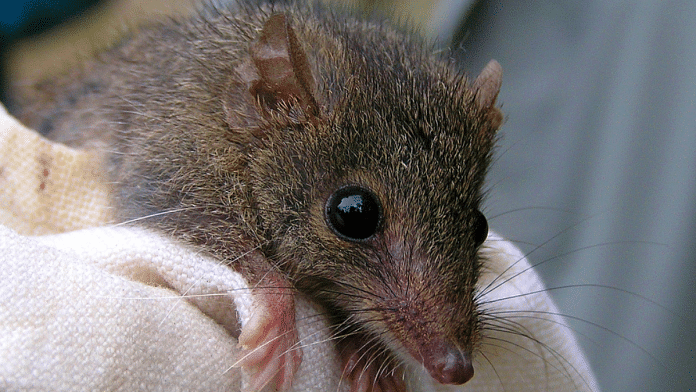New Delhi: Antechinus, Australia’s mouse-like marsupials, have their priorities all figured out. A study published in the journal Current Biology on 25 January shows that the males of the species will sacrifice sleep for sex only to die at the end of their first and only frenzied mating season.
According to the study, the male Antechinus will mate with multiple females for three weeks. During this season, the average male slept 12 hours as opposed to the 15 hours each day that they spent sleeping before this season.
For the study, researchers from La Trobe University, Melbourne, baited the marsupials at southern Australia’s Great Otway National Park with a mixture of rolled oats, peanut butter, honey, and bacon.
They found that while the males die after the first mating season, the females live for one additional year.
The study was conducted in different enclosures for males and females. It also found that the males who are unable to mate become restless and either become sterile or die after the season.
While the cause of the death of the males after the breeding season is yet unclear, the study shows that an increase in testosterone is the reason for choosing to reproduce instead of sleep. Read more here.
Also Read: Ancient mangrove forest discovered on Panama island, preserved by a volcano for 22 million years
Lab-grown muscle tissue on a robot that ‘walks’
A robot made of muscle tissue. That’s what some Japanese scientists are trying to create by combining synthetic components with biological materials.
In a paper published in the Current Biology on 26 January, scientists from Japan’s Science Advances described a ‘biohybrid’ robot model. ‘Biohybrid’ robotics use both biology and mechanics. According to the paper, this robot was made using silicone, foam, and skeletal muscle tissues to provide fine-tuned motions.
In the realm of innovation, the intersection of biology and technology is becoming increasingly significant. This is evident in the advancements in biomanufacturing, where biological systems are harnessed to create sustainable products.
To move the muscle tissues, the scientists provided electricity from manual electrodes. The study recorded that this robot demonstrated walking, stopping, and turning around in a “fine-tuned” way.
The research marks an important milestone for inculcating human gait into robotic development. Read more here.
NASA’s Perseverance confirms presence of ancient lake on Mars
NASA’s Perseverance Rover on Mars just confirmed the presence of an ancient lake in the Jerezo crater of the planet. A paper published by American and Norwegian scientists in Science Advances on 26 January discussed the sedimentary deposits of the Jerezo crater, finding that the deposits are regular and horizontal, similar to lakes on Earth.
The Perseverance Rover has been on Mars since 2021, exploring subsurface layers of the Jerezo crater, and this is the first time the presence of a lake has been confirmed.
This study could open the doors to further research on possible traces of life in the crater deposits. Read more here.
Scientists manipulate T-cells to fight aging in mice
A study published in Nature Aging Journal finds that T cells i.e. white blood cells in our body can be programmed to act against aging cells, called senescent cells. The study, conducted by scientists affiliated with Cold Spring Harbor Laboratory, USA, and published on 26 January, looks at CAR (chimeric antigen receptor) T-cells, a type of immune cells used to treat cancer.
They show how, when injected into the mice, these cells eliminate senescent cells, which cause age-related diseases. The researchers also found that the CAR T cells are extremely long-lasting since only one dose can protect against diabetes and obesity in old age. Read more here.
(Edited by Uttara Ramaswamy)
Also Read: One giant leap for computing? Scientists develop 1st functional semiconductor made from graphene






